Some Holiday Astronomy

If we get a break in the clouds over the next couple of weeks, you can enjoy some holiday astronomy. The Solstice on Thursday, December 21, marks the official start of Winter in the Northern Hemisphere. It’s a time for holidays in many cultures around the world, and our winter sky boasts the biggest assemblage of bright stars for the year.
The disk of our Milky Way Galaxy is full of molecular complexes – huge clouds of gas and dust that form the dark lanes visible in the summertime sky. In our winter sky from Orion to Cassiopeia, the Milky Way looks dimmer, because we’re looking outward toward the edge of our galaxy, but it has no shortage of this star making material.
Open clusters are loosely gravitationally bound groups of young stars that formed together in a dense region of a molecular complex, like the famous Seven Sisters, the Pleiades cluster now high in our sky. Amateur astronomers often name these clusters after various objects that are suggested by the arrangement of the stars in the cluster. One such cluster currently visible in Cassiopeia is Messier 103, or M103 – the Christmas Tree Cluster (see the above photo).
At least one of the stars in this cluster that started out with a larger mass has already evolved off the main sequence, and swelled up into a red giant, looking like an ornament on the tree.
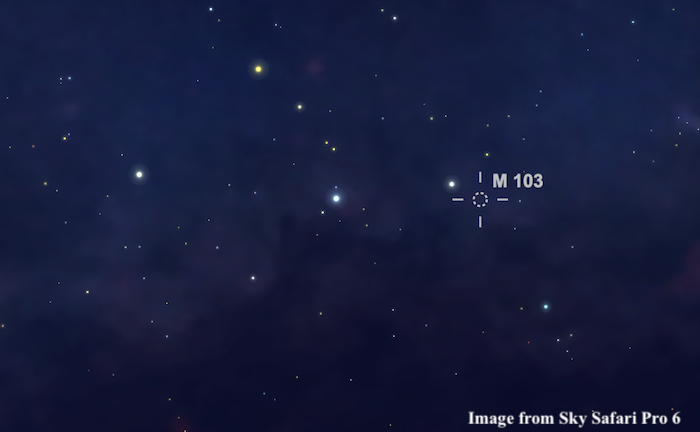
M103 is about 9000 light years away, and visible in binoculars or small telescopes next to Ruchbah, one of the bright stars in the W of Cassiopeia.
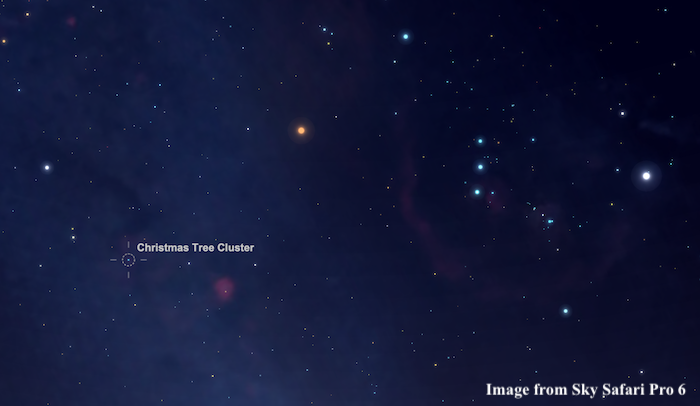
There’s another Christmas Tree Cluster in Monoceros, the Unicorn, next to Orion. This one is NGC 2264, and it’s larger and sparser than M103. This cluster is still embedded in clouds of dust and hydrogen, which fluoresces a pink color under the influence of their ultraviolet light. My camera didn’t capture this nebulosity, so to get the full effect, look up a long exposure astrophoto of NGC 2264. Or, maybe we can get a talented astroimager like StargazerRon to take one and send it in to Edhat. It’s about 2400 light years away.
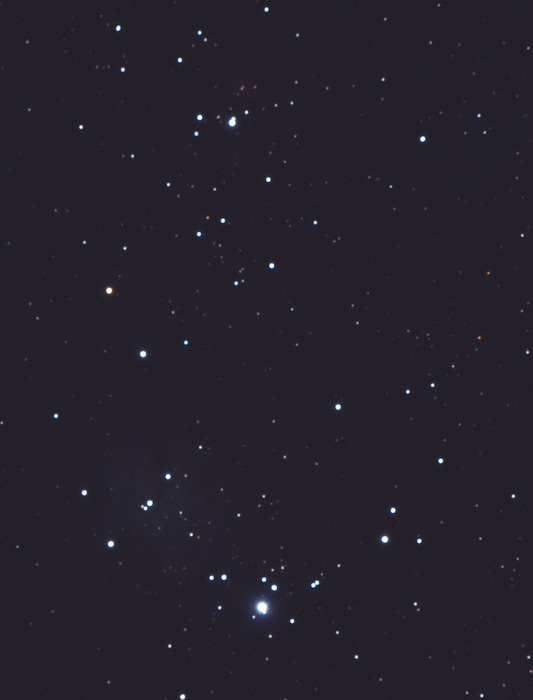
Definitely not as many ornaments have yet appeared on the NGC 2264 tree.
For celebrants out late on New Year’s Eve, there’s another celestial sight to help you celebrate, although it’s not nearly as flashy as a Christmas tree.
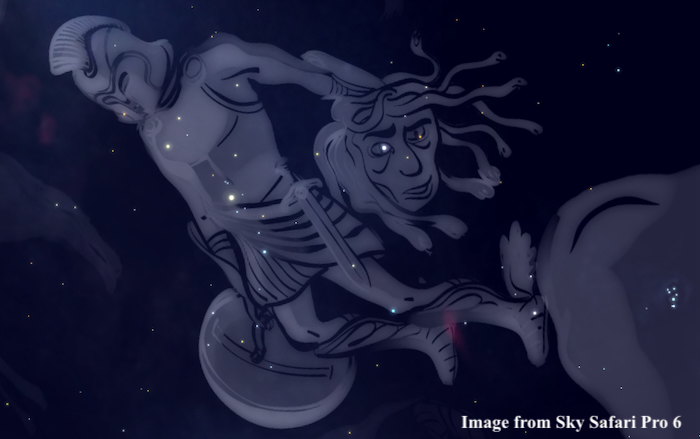
High overhead in our night sky now is the ancient Greek constellation Perseus, the Hero. He is traditionally depicted holding the severed head of Medusa, which he showed to Cetus, the Sea Monster to turn Cetus to stone and rescue Andromeda. The bright star representing one of Medusa’s eyes is called Algol.
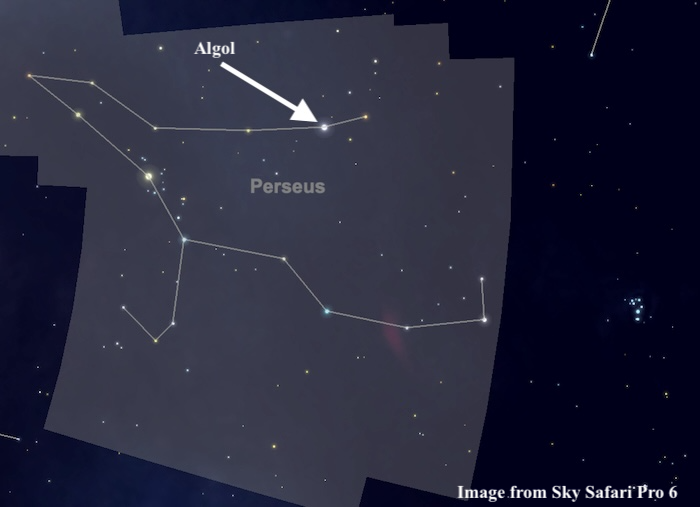
The name Algol comes from an Arabic phrase, ra’s al-ghul (head of the demon), and it is often called the Demon Star. Legend has it that the eye of Medusa winks back at the Earth. Sure enough, if you watch closely, about every 2.87 days, Algol fades to around half its normal brightness for a couple of hours. What’s really going on?

Algol is an eclipsing binary system with its orbital plane aligned such that we periodically see the smaller, brighter star pass behind the bigger star. There’s even a smaller dip detectable when the brighter star covers up part of the larger star on the other side of its orbit.
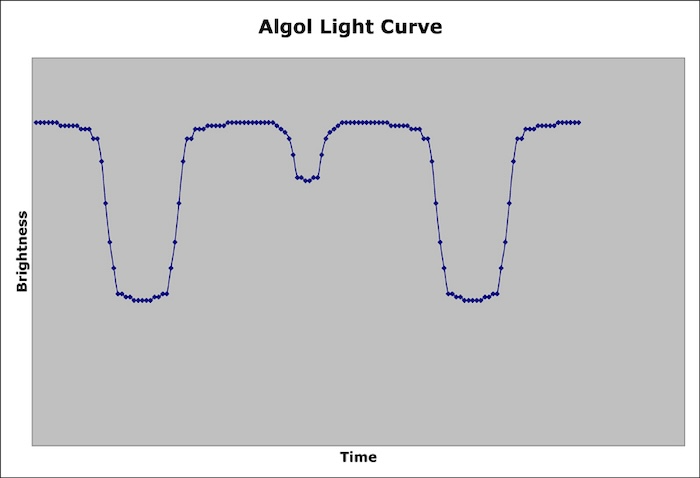
This explanation of Algol’s variability was proposed by an English amateur astronomer, John Goodricke, in 1783. Now we know that it is actually a triple star system, but one of the stars is very dim and small and does not contribute appreciably to the apparent brightness variations. The two main stars orbit at a separation of only 5.8 million miles, and are about 90 light years away from us.
I attempted to photograph Algol at normal brightness, and at minimum, but the camera doesn’t really reproduce the eyeball view very well, and the photos were taken on nights with slightly different levels of moonlight, scintillation, and transparency.
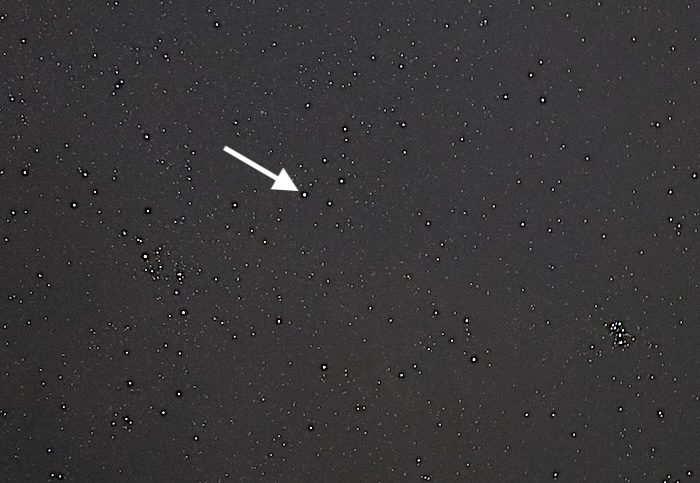
Above is Algol at “normal” brightness on the night of December 4.
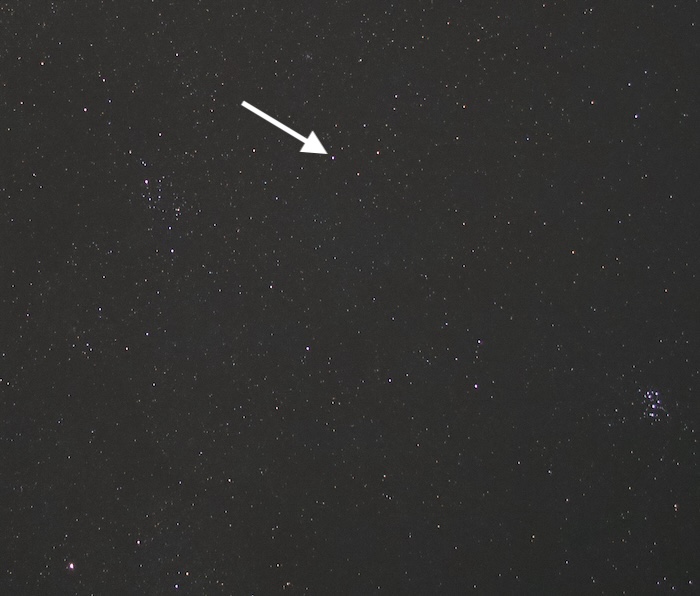
And here is Algol at minimum on December 9. The drop is apparent, but not as obvious as it is visually.
You’ll get a chance to see for yourself on New Year’s Eve, if the sky is clear. Algol will be at minimum brightness for about two hours, centered on 11:23 PM PST. See whether you can see the difference before you celebrate the New Year.
If you can’t observe that minimum, here are some other January PST times to try:
January 03 at 8:12 PM
January 06 at 5:01 PM
January 18 at 4:18 AM
January 21 at 1:08 AM
January 23 at 9:57 PM
January 26 at 6:46 PM
Happy Holidays everyone!














